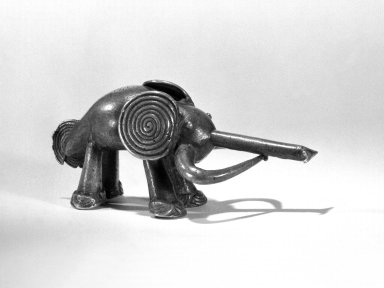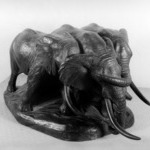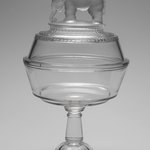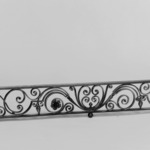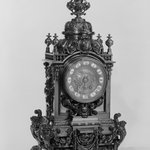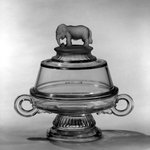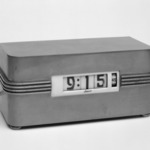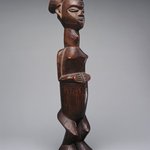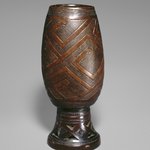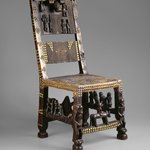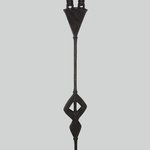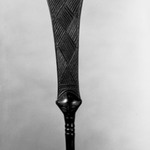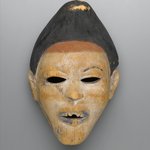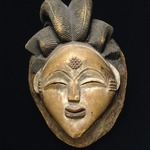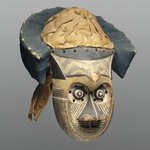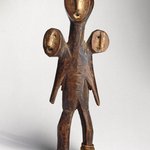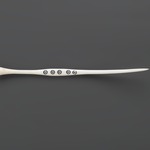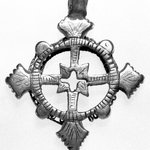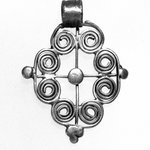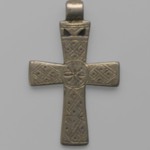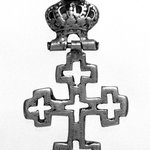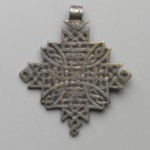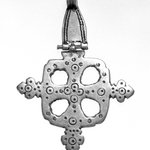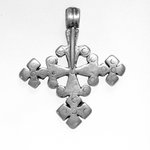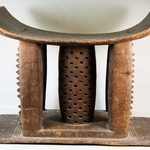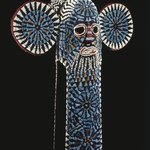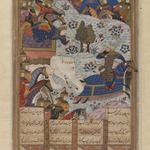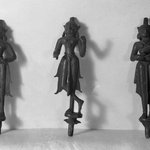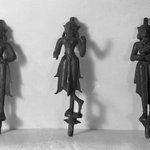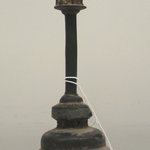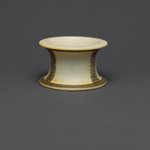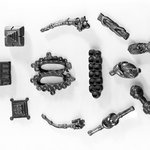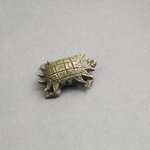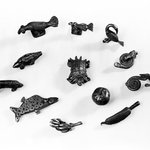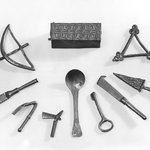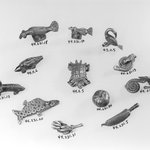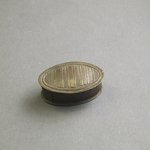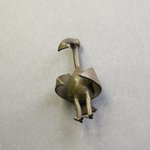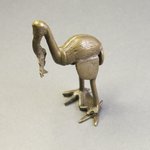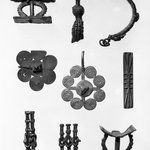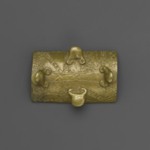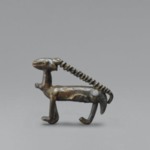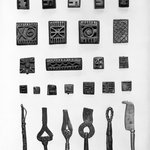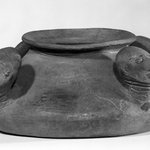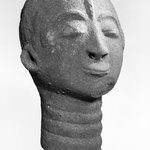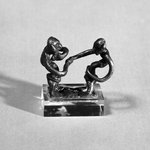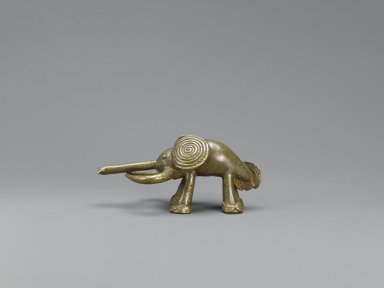

Akan. Gold-weight (abrammuo): elephant, 19th or 20th century. Brass, 1 11/16 x 3 3/4 in. (4.3 x 9.5 cm). Brooklyn Museum, Bequest of Laura L. Barnes, 67.25.15. Creative Commons-BY (Photo: Brooklyn Museum, 67.25.15_PS6.jpg)
Gold-weight (abrammuo): elephant
Arts of Africa
Gold was extremely important in the economic and political life of the Akan kingdoms of southern Ghana and Côte d’Ivoire. Until the mid-nineteenth century, gold dust was the primary form of currency in the region. In order to measure precise amounts of gold, an elaborate system of weights, usually made of cast brass, developed by the seventeenth century. Gold weights took many forms: simple geometric shapes; animals, such as leopards or birds; objects, such as chairs or swords; and human figures. The figures, animals, and objects are often associated with proverbs. The sankofa bird, with head turned backward, represents the proverb “One must turn to the past to move forward.”
CULTURE
Akan
MEDIUM
Brass
DATES
19th or 20th century
DIMENSIONS
1 11/16 x 3 3/4 in. (4.3 x 9.5 cm)
mount: 5 × 3 1/2 × 1 3/4 in. (12.7 × 8.9 × 4.4 cm) (show scale)



COLLECTIONS
Arts of Africa
ACCESSION NUMBER
67.25.15
CREDIT LINE
Bequest of Laura L. Barnes
CATALOGUE DESCRIPTION
Hollow elephant gold weight, trunk juts between large crescent tusks, raised eyes, large spiral ears, double-crescent tail, semi-circular elements in groups of trees on flat feet. Opening at stomach.
EXHIBITIONS
MUSEUM LOCATION
This item is not on view
CAPTION
Akan. Gold-weight (abrammuo): elephant, 19th or 20th century. Brass, 1 11/16 x 3 3/4 in. (4.3 x 9.5 cm). Brooklyn Museum, Bequest of Laura L. Barnes, 67.25.15. Creative Commons-BY (Photo: Brooklyn Museum, 67.25.15_PS6.jpg)
IMAGE
overall, 67.25.15_PS6.jpg. Brooklyn Museum photograph, 2011
"CUR" at the beginning of an image file name means that the image was created by a curatorial staff member. These study images may be digital point-and-shoot photographs, when we don\'t yet have high-quality studio photography, or they may be scans of older negatives, slides, or photographic prints, providing historical documentation of the object.
RIGHTS STATEMENT
Creative Commons-BY
You may download and use Brooklyn Museum images of this three-dimensional work in accordance with a Creative Commons license. Fair use, as understood under the United States Copyright Act, may also apply.
Please include caption information from this page and credit the Brooklyn Museum. If you need a high resolution file, please fill out our online application form (charges apply).
For further information about copyright, we recommend resources at the United States Library of Congress, Cornell University, Copyright and Cultural Institutions: Guidelines for U.S. Libraries, Archives, and Museums, and Copyright Watch.
For more information about the Museum's rights project, including how rights types are assigned, please see our blog posts on copyright.
If you have any information regarding this work and rights to it, please contact copyright@brooklynmuseum.org.
RECORD COMPLETENESS
Not every record you will find here is complete. More information is available for some works than for others, and some entries have been updated more recently. Records are frequently reviewed and revised, and we welcome any additional information you might have.

